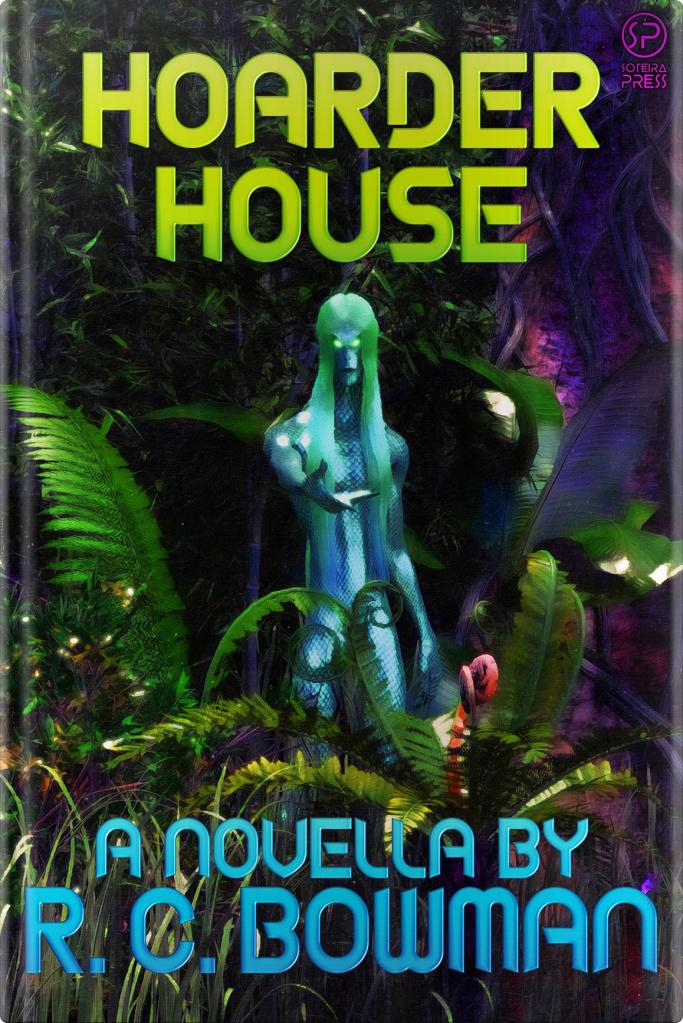On July 1, the Ng family grabbed our 18 bags (not including backpacks and handbags), took three cars to the airport, and set off for Singapore. Once we got there, we were ceremonially escorted to a fancy hotel, where they locked us in a suite and threw away the key. (At least we had snacks while we were serving our 14-day quarantine period.) Fortunately for our intrepid heroine (that’s me), she had her trusty Libby app and a wealth of borrowed library ebooks.
From the time I set foot on the plane in Montreal on July 1, to the time they finally let us out of the hotel room on July 17, I finished 16 books. Then I read 12 more before August snuck up behind me and clubbed me over the head with the reminder of a school year fast approaching.
Best books of July, here we come!
Circe
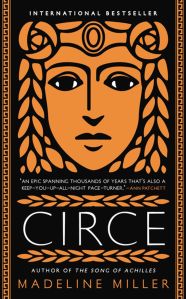
Title: Circe
Author: Madeleine Miller
Publisher: Lee Boudreaux Books (Little, Brown and Company)
ISBN: 9780316556330
But he liked the way the obsidian reflected his light, the way its slick surfaces caught fire as he passed. Of course, he did not consider how black it would be when he was gone. My father has never been able to imagine the world without himself in it.
In the halls of the gods, a quiet, strange child is born. She is unwanted and unloved by her powerful father and her cunning mother, and she does not possess godlike beauty like her siblings. But when she realizes that she possesses the power of witchcraft, she inadvertently becomes a threat to the gods, who exile her to a tiny island in the middle of nowhere. But even a remote island is not safe for a lone woman. As Circe comes to terms with her immortality and learns to fend for herself, she must also choose what (and who) she is willing to fight for.
Circe is that rarest of hybrids: a centuries-long saga that manages to be as intimate and compelling as a fireside tale. From snippets of Greek literature that mention the nymph Circe, Miller weaves a story full of quiet strength, ferocity and the fraying edges of mortality — a celebration of womanhood in a man’s world, centred around a woman learning what it means to be human. Miller’s prose is simple but beautiful, and Circe herself is easy to love despite her many flaws. For me, the most poignant part of this novel is the many lives Circe touches as she lives out her eternity — a reminder of the people we touch as we follow our threads to the end.
Warning: Mentions of rape (a man rapes Circe once), mentions of sex (not graphic), occasional swearing (f*ck, etc.), violence and death, sacrifices, pregnancy and birth, brief mentions of bestiality and incest, and all the horrible things that happen to people in Greek mythology.
The Amazing Adventures of Kavalier and Clay
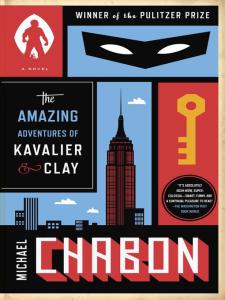
Title: The Amazing Adventures of Kavalier and Clay
Author: Michael Chabon
Publisher: Random House
ISBN: 9780812993677
“Keep crying,” Josef said, reasoning that breathing was the essential thing and that weeping was in part a kind of respiration. “That’s good.”
The year is 1939, Nazi Germany has just attacked Poland, and two young men in New York are about to change their names and become two of the biggest players in the comic book industry. Right now, Sammy Clay and Joe Kavalier are just two Jewish teenagers, smoking a cigarette in the dark to avoid Sammy’s mom’s wrath. But soon, they’ll be swept away in a high-stakes game of superheroes, politics and money that will either make or break them. With a little luck, a little chutzpah, and a lot of help from one another, they might just make it big. But will that be enough for them?
The Amazing Adventures of Kavalier and Clay is an absolute joy of a novel. I can honestly say I have never (and maybe will never) read anything quite like it. Chabon is a phenomenal writer and he clearly knows it — it takes a certain confidence to tell your readers, “Now we’re going to smuggle a golem out of a window,” and expect them to believe it. But we believe it. Even in its most absurd moments, the moments most worthy of the prefix “super-“, Kavalier and Clay carries an authenticity that sets it apart. The characters are so real that sometimes it’s even awkward for the reader to be up close and personal with the boys’ dreams and desires. Yes, the writing can be a little wordy and difficult to follow at times. But push through, if you can; it’s worth it.
Warning: One instance of rape (not graphic), sex and mentions of masturbation, mentions of Nazism and Nazi Germany (including concentration camps), war and violence/death (including violence towards animals), swearing (f*ck, sh*t, etc.), smoking, a character is gay and faces abuse for his sexuality.
The Seven Deaths of Evelyn Hardcastle
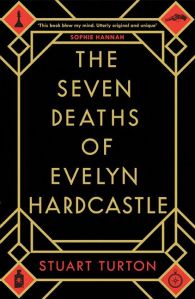
Title: The Seven Deaths of Evelyn Hardcastle
Author: Stuart Turton
Publisher: HarperCollins
ISBN: 9781443457460
I search the forest again. Every direction looks the same: trees without end beneath a sky filled with spite.
How lost do you have to be to let the devil lead you home?
This lost, I decide. Precisely this lost.
Tonight, like all other nights, Evelyn Hardcastle will be killed. It won’t look like a murder so no one will investigate it. No one, but an unnamed, unknown guest in the Hardcastle house. The guest has one goal — solve the murder — and eight days to do it in. Every morning, he wakes up in the body of a different guest and relives the day from behind a different pair of eyes. But he is not the only guest in the house, and he is not the only one desperate to get out.
Think Groundhog Day meets Memento and you’ll have an idea of the mind-bending hoops this book jumps through. While Turton twists the different days together and the guest starts parsing the mystery of Evelyn’s death, the reader gets to follow the fragments of clues that never quite add up (I like to envision it as the stereotypical cork board with a spiderweb of connecting red string). The only constant is that the more you think you know, the less you actually do, which makes this a fun read if you enjoy puzzling things out. I will admit that the ending was a little anticlimactic for me — it added a few elements that came out of the blue for me, instead of being hinted at by the clues in the first 3/4 of the book — but that in no way spoiled my enjoyment of most of the book.
Warning: Murder (obviously), mentions of suicide, violence, inebriation, swearing (d*mn), one mention of sex.
We Have Always Lived in the Castle
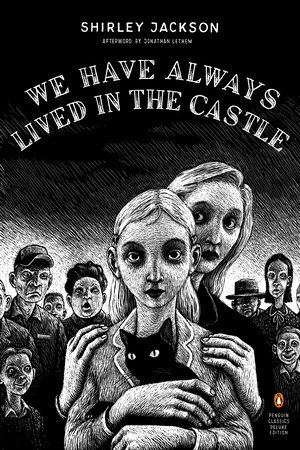
Title: We Have Always Lived in the Castle
Author: Shirley Jackson
Publisher: Penguin Classics (Penguin Publishing Group)
ISBN: 9780143039976
The last time I glanced at the library books on the kitchen shelf they were more than five months overdue, and I wondered whether I would have chosen differently if I had known that these were the last books, the ones which would stand forever on our kitchen shelf.
Mary Katherine “Merricat” Blackwood lives in the Blackwood estate with her sister, Constance, and her Uncle Julian. The people in the village hate them. When Merricat goes out for groceries she calculates the safest and least vulnerable route, but usually she ends up being the butt of the village children’s mockery anyway. Despite that, her life is almost perfect, until an unwanted guest shows up on her front step.
Shirley Jackson is possibly the most unknown widely-read horror writer (I make this claim without having done any research but I’m pretty sure it’s correct). She wrote The Haunting of Hill House (yeah, the Netflix series), and The Lottery (the really depressing play you may have read in high school). We Have Always Lived in the Castle is an example of the quiet, insidious horror she’s known for. The novella explores many different elements of horror, like superstition, isolation, and the tension between the old and the new. Through Merricat’s innocent-seeming narration of the events that unfold, you are always half aware of the wrongness of the situation, like that weird half-consciousness between asleep and awake. It’s a short book — you can knock it out in an afternoon — but it really is a worthwhile read if you’re looking for something just a little bit on the unsettling side.
Warning: Murder, superstition, death, violence, occasional light swearing (d*mn).
His Majesty’s Dragon (The Temeraire Series)
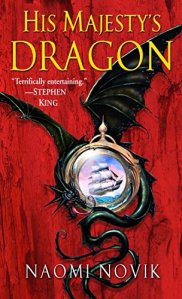
Title: His Majesty’s Dragon (the Temeraire series)
Author: Naomi Novik
Publisher: Del Rey (Random House)
ISBN: 9780345481283
I had a lot to say about this one so I felt it warranted its own post.

